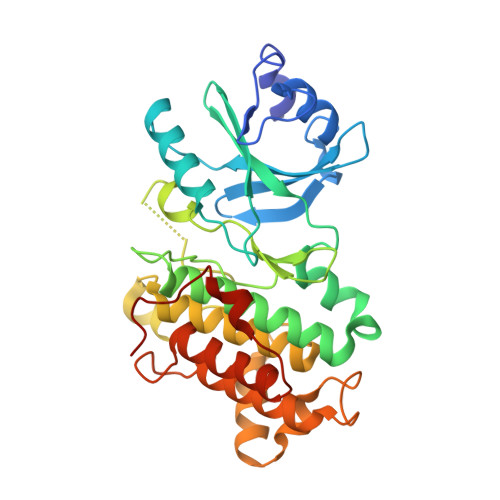Structure of the pseudokinase domain of BIR2, a regulator of BAK1-mediated immune signaling in Arabidopsis.
Blaum, B.S., Mazzotta, S., Noldeke, E.R., Halter, T., Madlung, J., Kemmerling, B., Stehle, T.(2014) J Struct Biol 186: 112-121
- PubMed: 24556575
- DOI: https://doi.org/10.1016/j.jsb.2014.02.005
- Primary Citation of Related Structures:
4L68 - PubMed Abstract:
The BAK1-interacting receptor-like kinase 2 (BIR2) belongs to the large family of leucine-rich repeat receptor-like kinases (LRR-RLKs) that mediate development and innate immunity in plants and form a monophyletic gene family with the Drosophila Pelle and human interleukin-1 receptor-associated kinases (IRAK). BIR2 is a negative regulator of BAK1-mediated defense mechanisms and cell death responses, yet key residues that are typically required for kinase activity are not present in the BIR2 kinase domain. We have determined the crystal structure of the BIR2 cytosolic domain and show that its nucleotide binding site is occluded. NMR spectroscopy confirmed that neither wild type nor phosphorylation-mimicking mutants of BIR2 bind ATP-analogues in solution, suggesting that BIR2 is a genuine enzymatically inactive pseudokinase. BIR2 is, however, phosphorylated by its target of regulation, BAK1. Using nano LC-MS/MS analysis for site-specific analysis of phosphorylation, we found a high density of BAK1-transphosphorylation sites in the BIR2 juxta membrane domain, a region previously implicated in regulation of RLKs. Our findings provide a structural basis to better understand signaling through kinase-dead domains that are predicted to account for 20% of all Arabidopsis RLKs and 10% of all human kinases.
Organizational Affiliation:
Interfaculty Institute of Biochemistry, University of Tübingen, 72076 Tübingen, Germany.















